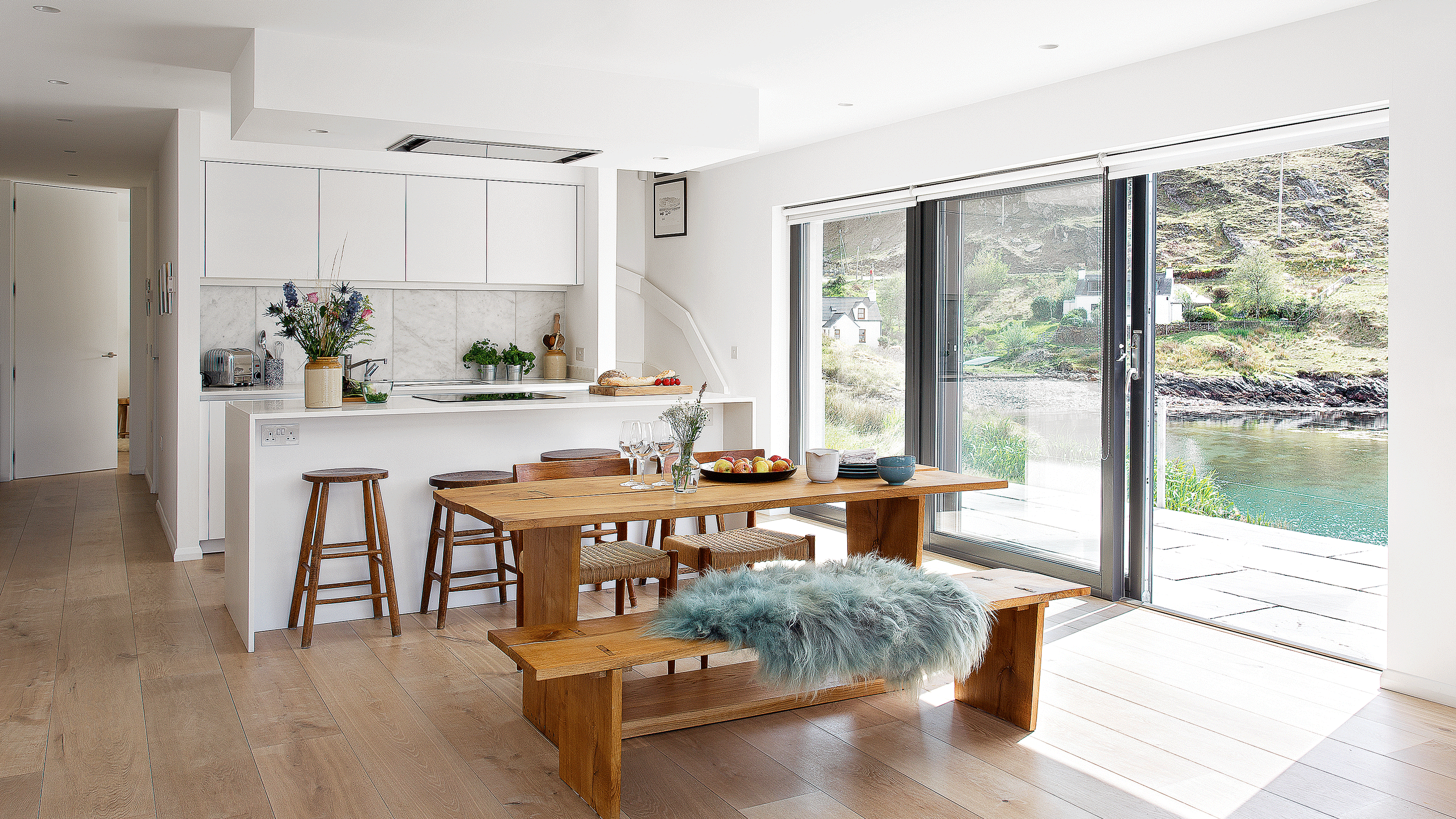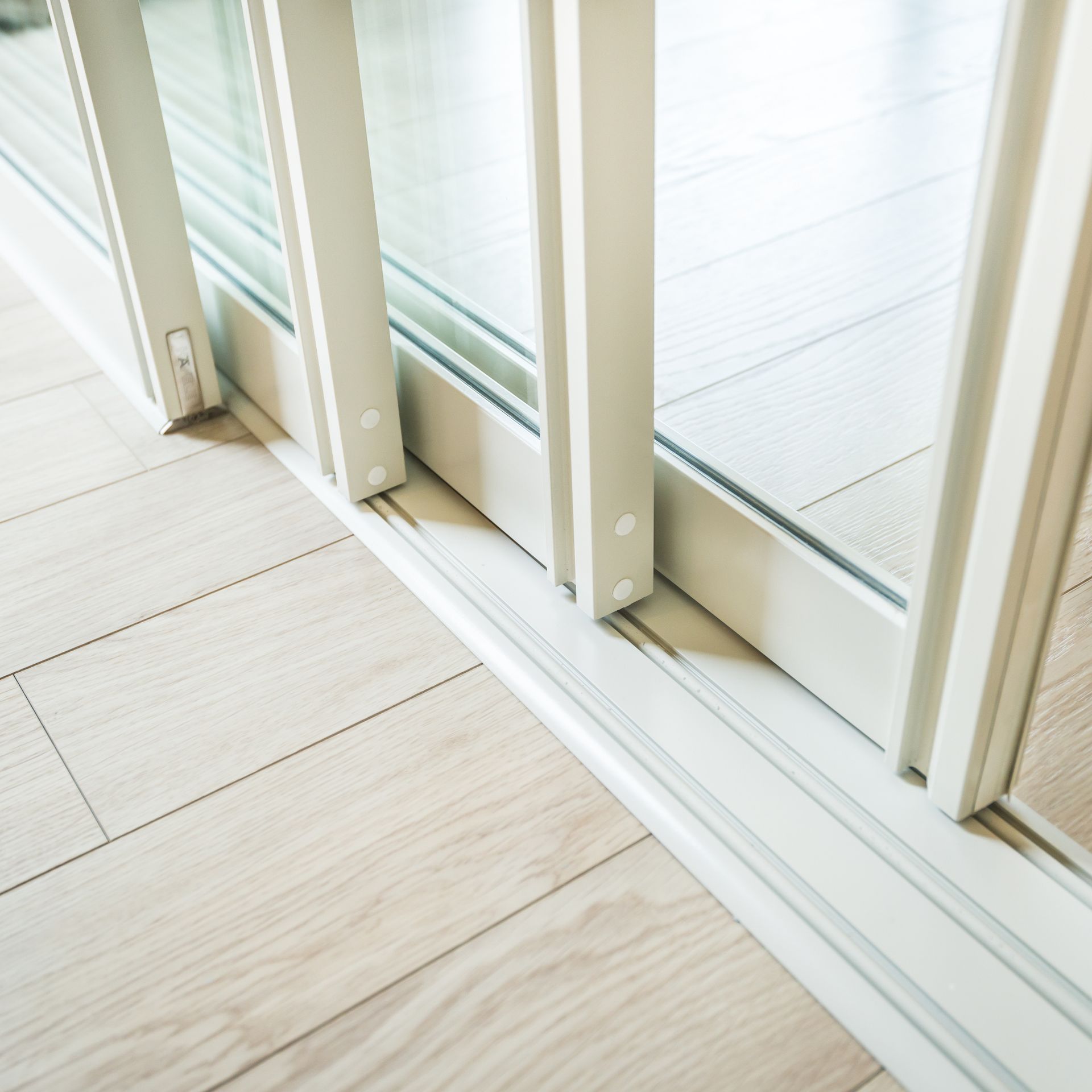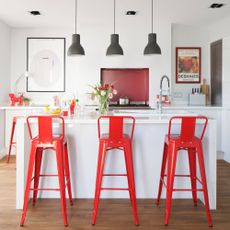How to fix glass sliding doors in seven simple steps
Repair your faulty door and get it sliding properly again with our easy to follow guide
- (opens in new tab)
- (opens in new tab)
- (opens in new tab)
- Sign up to our newsletter


If sliding glass doors are a part of either the interior or exterior of your house, it’s a good idea to learn how to fix glass sliding doors yourself, so that you can repair any issues and avoid the need to shop for replacements further down the line.
Glass sliding doors are an elegant addition to the home, helping rooms feel more light and spacious. Most commonly used at the back of the house as part of an extension idea, they can provide a wonderful view of the garden from the kitchen, or they can help open plan rooms flow more freely when used as part of modern living room ideas. Installing sliding glass doors are a little trickier than learning how hang a standard door. However, wherever your glass sliding doors sit, it’s important that they are working correctly and sliding smoothly, and if they aren’t, it’s time to get them fixed.
‘Most sliding doors use rollers that run along a track, making them easy to open and close,' explains Thomas Goodman, Property and Construction Expert, MyJobQuote (opens in new tab). ‘But over time, these mechanisms can wear or break so the door doesn’t work properly.’
So though it’s not uncommon to experience issues with sliding doors, it’s still far from ideal, which is why we’ve put together a clear guide so you can learn how to fix glass sliding doors and get them back to full working order as quickly as possible.

How to fix glass sliding doors: step-by-step
We've asked the experts and rounded up their advice to create a simple yet effective guide on how to fix glass sliding doors. There are seven steps to follow to get your sliding door operating smoothly again, and because some of the steps involve a bit of heavy lifting, we recommend calling on an extra pair of hands before you begin.
1. Detach the rollers from the track
The first step in how to fix glass sliding doors is to detach the rollers from the track. The rollers are the wheels fitted to the bottom of the door that sit inside the track and allow the door to slide from left to right.
'Find a suitable screwdriver to adjust the screws on the bottom of the door,' says Thomas Goodman, Property and Construction Expert, MyJobQuote (opens in new tab). 'If the screws have cross-shaped grooves, then a standard Phillips screwdriver is all you’ll need.'
Turn the screws in a clockwise direction to move the internal rollers upwards, inside the door. This should lower the door, so it rests on the track.
2. Lift the door out of the frame

You can now lift the door up off the track and move it carefully out of the frame. We recommend having someone else on hand to help you do this.
'If you don’t have someone who can hold the door for you while you’re working, rest it flat on two sawhorses,' suggests Thomas. 'These are easily available from all good DIY stores but many people have a pair in their garage or shed, so it's worth asking around.'
3. Examine the rollers
Lie the door on its side so you can see the rollers on the bottom clearly. The rollers are contained in a metal bracket which clips inside the bottom of your door. This bracket will need prising out carefully with the help of a screwdriver or pair of pliers.
Rollers can show signs of wear and tear, especially if they've been in use for a while. Whether or not the rollers need replacing will depend on the level of damage they are showing.
4. Clean and lubricate the rollers

If there are no obvious breakages in the rollers, they may just need a good clean to remove any dirt preventing them from sliding smoothly along the track.
Wipe over the rollers with a microfibre cloth, and then add a few drops of oil or similar lubricant, such as WD-40. Lubricating the rollers will relieve any stiffness in the sliding mechanism and help them move smoothly again.
If the rollers spin freely once you've lubricated them, you can go straight to step six.
5. Or, replace the rollers
If the rollers are showing signs of heavy wear and tear and won't turn properly, they'll probably need to be replaced.
If you know the door manufacturer, they should be able to provide you with a fairly inexpensive roller mechanism replacement. 'Or take the broken section with you to a DIY store and find the closest match in size and shape,' suggests Thomas. 'These tend to be standard door components, so you should be able to find an almost identical part.'
Detach the roller assembly from the door frame with a screwdriver, and replace with the new one. Tap it in gently with a rubber mallet or similar tool, so it’s flush and level. Then turn the bottom door screws again with your screwdriver to ensure the roller section is adjusted as far up as far as it’ll go. This is so you can fit the door back into the frame.
6. Vacuum the track

Before reattaching the door, run your vacuum hose over the track to remove anything that might be blocking the sliding mechanism. Give everywhere a good clean with a damp cloth and dry thoroughly.
7. Reattach the door

Lastly, you'll need to place the door back to its original position. Push the top of the door into the frame first, then place the lower part of the door back onto the tracks. Use the screws to lower the rollers down, until the door is able to run freely back and forth.
And that's it!
Why is my sliding glass door so hard to open?

Generally speaking, the mechanics of a sliding glass door will deteriorate due to wear and tear. The longer you've had your sliding glass door, the more likely you are to experience issues, because the hardware within the door will start to depreciate.
'Slamming a door shut, leaving dirt or stones in the running track, or forcing a locking mechanism can cause the frame, its fixings and the glass to move over time,' says Tom Butler, Industry Expert, MyGlazing.com (opens in new tab). 'This shift in weight will begin working against the forces of gravity leading to failings in the fixings.'
'Sliding doors have very deep tracks and outer frames so need to sit on a solid base and have solid fixing points all around the door,' explains Steve Bromberg, Managing Director, Express Bi-Folding Doors (opens in new tab). 'If part of the sliding door is unsupported (ie: sitting between the brick cavities) this can cause issues.'
He adds, 'if it's a large sliding door, the glass might just be really heavy – the glass unit can weigh up to 150kg, which is going to be quite heavy to slide.'
How do you fix a sliding glass door track?
'To fix a sliding glass door track, you need to ascertain what the problem is first and foremost, and then depending on the issue you can tackle it at that point,' advises Steve.
Common issues with sliding glass doors can be resolved by replacing the roller mechanism and giving the track a thorough clean to make sure nothing is obstructing it. But sliding doors do come with different frames and types of tracks, so if you're still experiencing problem, it might be time to contact a qualified tradesperson.
'Ultimately the varying factors with sliding glass doors mean there isn’t a one size fits all approach to resolving issues,' says glazing expert Tom. 'On top of this, the problem could be something else entirely such as the glazing method unevenly distributing the weight of the glass in the frame, causing a disturbance to movement.'
So though you can learn how to fix glass sliding doors with the method discussed in our guide, larger issues such as an incorrect fitting may require you to contact the company directly. If the doors are under guarantee, they should come and rectify the issue.

Katie Sims has been writing for Ideal Homes since spring 2022. She qualified from her Master’s in Media and Journalism in 2021 and has been writing freelance since. She has worked on Ideal Home’s ecommerce team where she researched the best home products on the market, and on the news team, researching the latest trends for feature pieces.
-
 'This rustic farmhouse felt like home the minute we stepped through the front door'
'This rustic farmhouse felt like home the minute we stepped through the front door'This mum of three restored a dated farmhouse and created a better life for her family in the process
By Laura Ewart
-
 Ultimate kitchen spring cleaning checklist – the only kitchen cleaning list you’ll need
Ultimate kitchen spring cleaning checklist – the only kitchen cleaning list you’ll needCheck these chores off to keep your kitchen in tip top condition
By Tara King
-
 How to get rid of moss in a lawn – 5 steps to healthy grass
How to get rid of moss in a lawn – 5 steps to healthy grassFollow these tried and tested expert methods to rid your lawn of moss
By Rachel Crow


